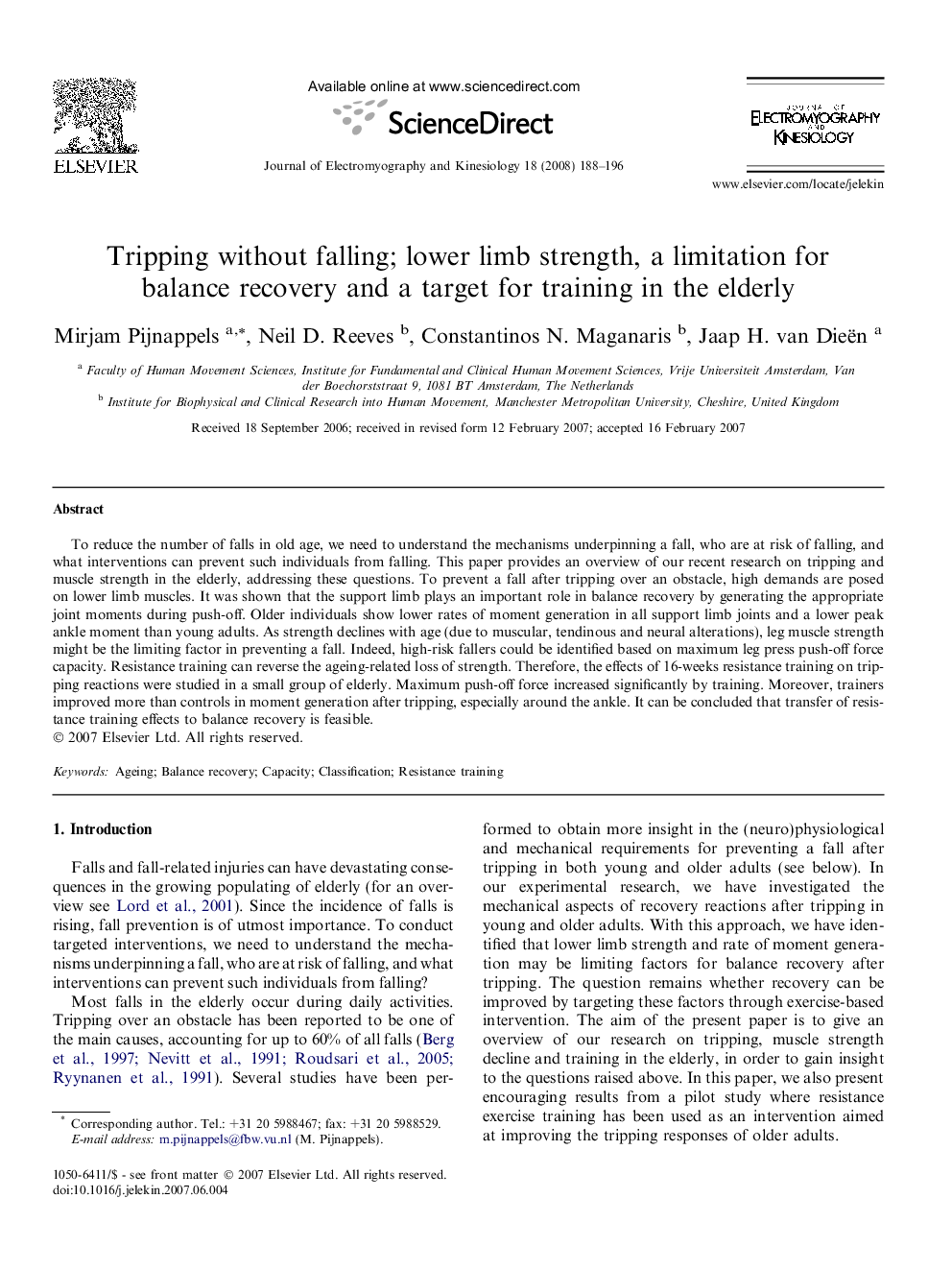| Article ID | Journal | Published Year | Pages | File Type |
|---|---|---|---|---|
| 4065736 | Journal of Electromyography and Kinesiology | 2008 | 9 Pages |
To reduce the number of falls in old age, we need to understand the mechanisms underpinning a fall, who are at risk of falling, and what interventions can prevent such individuals from falling. This paper provides an overview of our recent research on tripping and muscle strength in the elderly, addressing these questions. To prevent a fall after tripping over an obstacle, high demands are posed on lower limb muscles. It was shown that the support limb plays an important role in balance recovery by generating the appropriate joint moments during push-off. Older individuals show lower rates of moment generation in all support limb joints and a lower peak ankle moment than young adults. As strength declines with age (due to muscular, tendinous and neural alterations), leg muscle strength might be the limiting factor in preventing a fall. Indeed, high-risk fallers could be identified based on maximum leg press push-off force capacity. Resistance training can reverse the ageing-related loss of strength. Therefore, the effects of 16-weeks resistance training on tripping reactions were studied in a small group of elderly. Maximum push-off force increased significantly by training. Moreover, trainers improved more than controls in moment generation after tripping, especially around the ankle. It can be concluded that transfer of resistance training effects to balance recovery is feasible.
